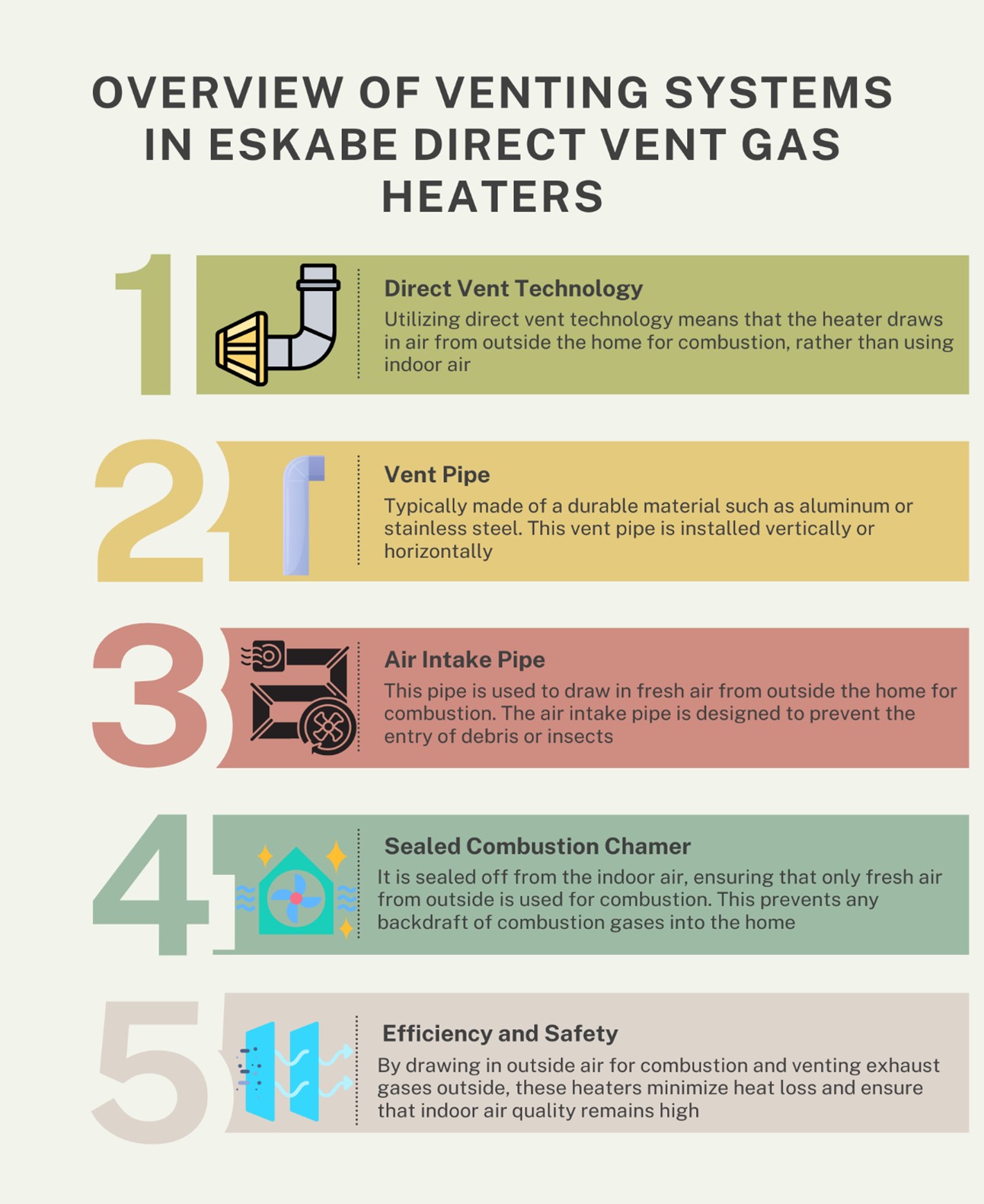Understanding Direct Vent Gas Heaters: A Guide to Efficient and Safe Heating

When selecting your heat source, there are many things to consider depending on the situation. Venting systems are a crucial component of direct vent gas heaters like those offered by Eskabe. These systems play a vital role in ensuring safe and efficient operation by removing combustion gases from the heater and expelling them outside the home. Let's take a closer look at the venting systems used in Eskabe heaters and how they contribute to the overall performance of the heater:
Direct Vent: Eskabe heaters utilize direct vent technology, which is a closed combustion system. This means that the heater draws in air from outside the home for combustion, rather than using indoor air. The combustion gases are then vented outside through a separate vent pipe, keeping indoor air clean and free of pollutants.
Vent Pipe: The vent pipe used in Eskabe heaters is typically made of a durable material such as aluminum or stainless steel. It is important that the vent pipe is properly sized and installed to ensure efficient venting of combustion gases.
Air Intake Pipe: This pipe is used to draw in fresh air from outside the home for combustion. It is designed to prevent the entry of debris or insects.
Sealed Combustion Chamber: Eskabe heaters feature a sealed combustion chamber, which further enhances safety and efficiency. This prevents any backdraft of combustion gases into the home.
Efficiency and Safety: The venting system used in Eskabe heaters contributes to their high efficiency and safety. By drawing in outside air for combustion and venting exhaust gases outside, these heaters minimize heat loss and ensure that indoor air quality remains high.
Installation Considerations: Proper installation of the venting system is crucial for the safe and efficient operation of Eskabe heaters. It is important to follow the manufacturer's guidelines and local building codes when installing the vent pipe and air intake pipe.
The venting systems used in Eskabe direct vent gas heaters are an integral part of their design, ensuring safe and efficient operation. These systems help to maintain indoor air quality while maximizing heating efficiency.
